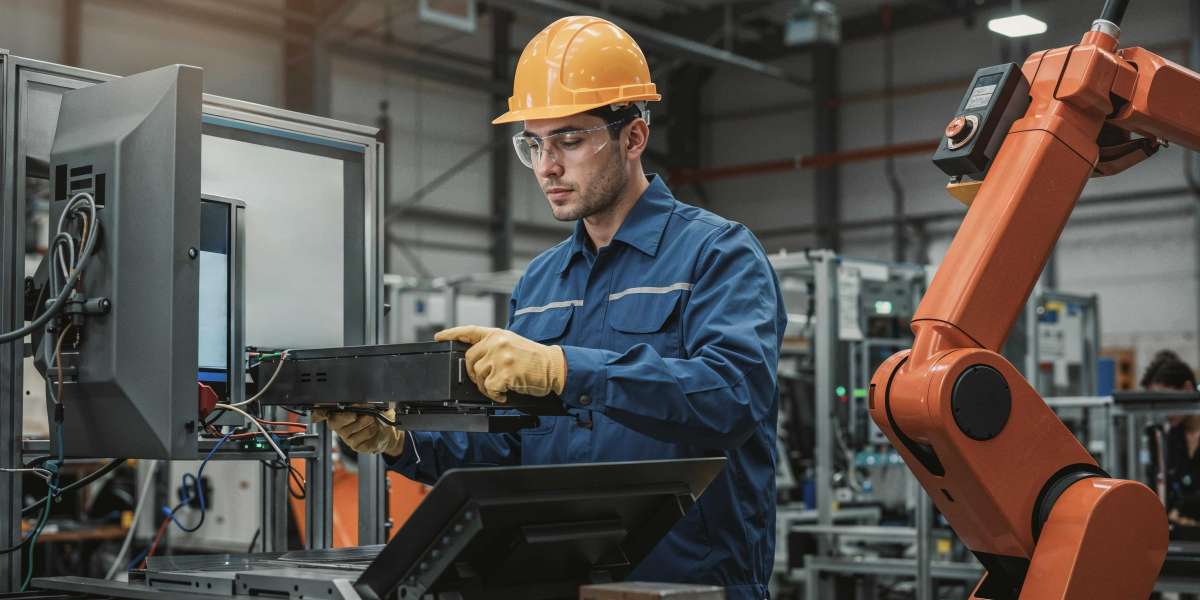Automated industrial systems are transforming how factories, plants, and production facilities operate. By integrating advanced technologies like PLCs, robotics, AI, and IoT, these systems enhance efficiency, reduce costs, and improve product quality.
In this comprehensive guide, we'll explore the key components, benefits, applications, and future trends of automated industrial systems - and how xtremeautomationllc.com delivers cutting-edge automation solutions.
What Are Automated Industrial Systems?
Automated industrial systems use control systems, machinery, and software to operate equipment with minimal human intervention. These systems combine:
Programmable Logic Controllers (PLCs) - For process control
Robotics Motion Control - For precision tasks
Sensors IoT Devices - For real-time monitoring
Human-Machine Interfaces (HMIs) - For operator interaction
Industrial Networks - For seamless communication
Types of Industrial Automation Systems
Fixed/Hard Automation - Dedicated to a single task (e.g., assembly lines)
Programmable Automation - Reprogrammable for batch production
Flexible/Soft Automation - Adaptable to varying tasks (e.g., robotic arms)
Integrated Automation - Fully automated smart factories (Industry 4.0)
Key Benefits of Automated Industrial Systems
Increased Productivity
24/7 operation with minimal downtime
Faster production cycles than manual processes
Improved Quality Consistency
Reduced human error for higher precision
Uniform output with strict quality control
Enhanced Safety
Reduces worker exposure to hazardous environments
Built-in emergency stop (E-stop) and fail-safes
Cost Savings
Lower labor and operational costs
Optimized energy and material usage
Data-Driven Decision Making
Real-time monitoring via SCADA IIoT
Predictive maintenance to prevent failures
Applications Across Industries
Automotive
Robotic welding, painting, assembly
Food Beverage
Packaging, sorting, quality inspection
Pharmaceuticals
Precision filling, labeling, sterile packaging
Oil Gas
Pipeline monitoring, refinery automation
Electronics
PCB assembly, testing, packaging
Logistics
Automated guided vehicles (AGVs), warehouse robots
Core Components of Automated Industrial Systems
Control Systems (PLCs DCS)
Execute logic for machinery operation
Examples: Siemens, Allen-Bradley, Mitsubishi
Industrial Robotics
Articulated, SCARA, and collaborative robots (cobots)
Brands: Fanuc, ABB, KUKA
Sensors Vision Systems
Proximity sensors, temperature sensors, barcode scanners
Machine vision for defect detection
Communication Networks
Ethernet/IP, Profibus, Modbus, OPC UA
Human-Machine Interface (HMI)
Touchscreen panels for monitoring and control
Implementing Automated Industrial Systems
Assess Business Needs
Identify bottlenecks and automation opportunities
Choose the Right Technology
PLC vs. DCS vs. PC-based control
Robotics, conveyors, or AGVs
System Integration
Ensure compatibility between PLCs, HMIs, and networks
Testing Validation
Simulation, FAT (Factory Acceptance Testing)
Training Maintenance
Operator training and preventive maintenance plans
Why Partner with xtremeautomationllc.com?
We specialize in end-to-end industrial automation solutions:
Custom PLC HMI Programming
Robotic Cell Integration
SCADA MES Implementation
Legacy System Upgrades
24/7 Support Maintenance
Our expertise ensures seamless automation deployment for maximum ROI.
Future Trends in Industrial Automation
AI Machine Learning - Predictive analytics, adaptive control
Digital Twins - Virtual simulations for optimization
5G Edge Computing - Faster real-time data processing
Collaborative Robots (Cobots) - Safer human-robot interaction
Sustainable Automation - Energy-efficient smart factories
Conclusion
Automated industrial systems are no longer optional - they're essential for staying competitive in manufacturing, logistics, and beyond. By leveraging PLCs, robotics, and IoT, businesses can achieve higher productivity, lower costs, and smarter operations.











